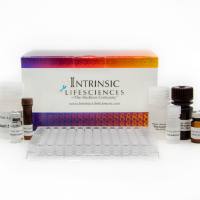Identification and Characterization of Spermatogonial Subtypes and Their Expansion in Whole Mounts and Tissue Sections from Primate Testes
互联网
565
The different types of spermatogonia present in the testes of all mammalian species have a series of functions in the adult testis. Some cycle regularly to (1) maintain the spermatogonial population and (2) derive differentiating germ cells to maintain continuous spermatogenesis; other spermatogonia act as a functional reserve, proliferating only very rarely under healthy conditions but repopulating the depleted seminiferous tubules after gonadotoxic insult. The number, appearance, and function of different types of spermatogonia differ greatly between mammalian species, and therefore the precise number of mitotic steps and the number of identifiable stages in spermatogenesis, the sperma-togenic efficiency, and the histological appearance of the seminiferous epithelium show remarkable variation. To characterize spermatogonial phenotypes and their respective functions and to understand the kinetics of spermatogenesis in any given species, a series of methods can be combined for best results. Conventional (hema-toxylin or Periodic acid Schiff's reagent PAS/hematoxylin) staining on sections allows histological identification of the different types of spermatogonia and stages of spermatogenesis in the tissue. Immunohistochemical detection of the proliferation marker bromodeoxyuridine (BrdU) in sections and whole mounts of seminiferous tubules allows determination of which types of spermatogonia proliferate in which stage of spermatogenesis and determine the sizes of clones of proliferation spermatogonia in each stage. Combined, these methods allow the best possible characterization of spermatogenesis in any given mammalian species.









